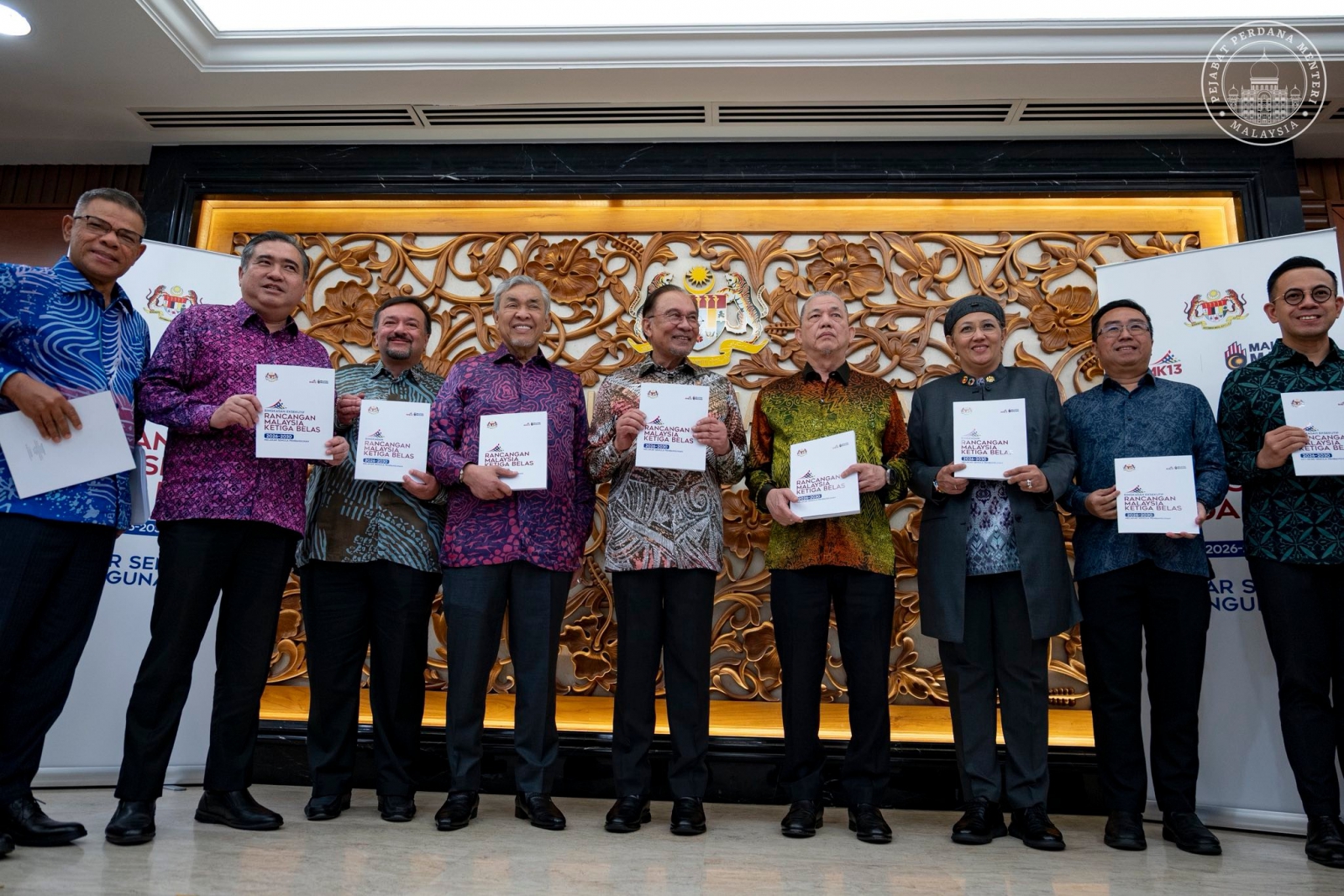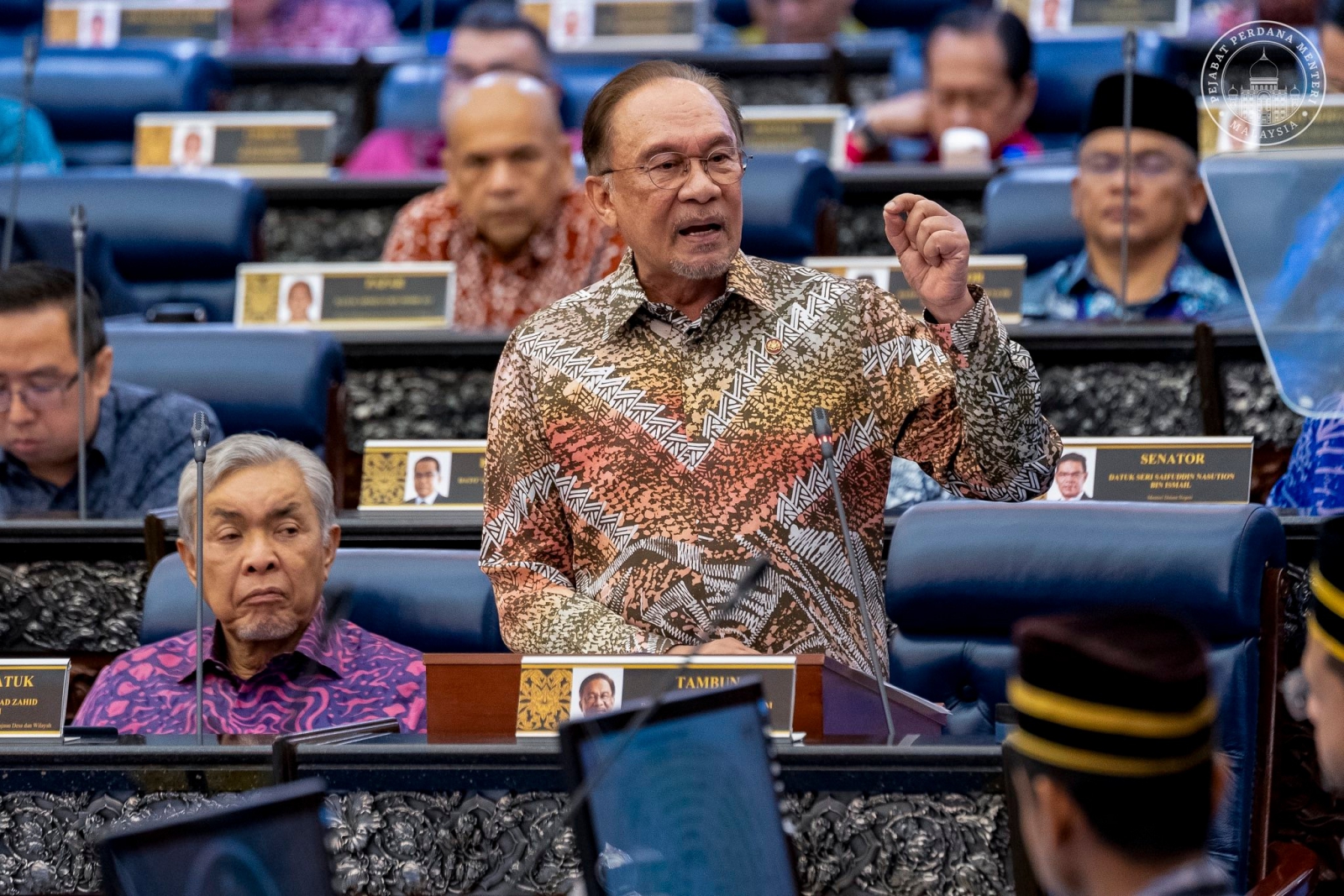
Malaysian Prime Minister Anwar Ibrahim (center) unveils the government's policy roadmap for the next five years alongside key officials. (Photo: Malaysian Government)
Malaysian Prime Minister Anwar Ibrahim on July 31 unveiled a national development roadmap targeting a 35% share of renewable energy in power generation by 2030. The plan also includes interconnecting power grids between Peninsular Malaysia and Sarawak to expand green electricity exports, and the revival of the country’s nuclear power ambitions as part of its low-carbon energy transition.
13MP sets out reforms for renewable growth
The 13th Malaysia Plan (13MP), as the blueprint is known, lays out the government’s strategic direction for the next five years. Anchored on three core themes and nine strategic thrusts, the plan includes an investment of 430 billion ringgit (about USD 100 billion) to position Malaysia among Asia’s leading economies and within the world’s top 30.
On the renewable front, the plan sets a target of increasing installed capacity from renewables to 35%, up six percentage points from 2024. Sarawak already exceeds its target with a 62% share. The blueprint also mentions plans to enhance the interconnection between East and West Malaysia, potentially strengthening ASEAN Power Grid (APG) integration and facilitating cross-border electricity trade, though no further details were provided.
Presenting the plan to Parliament, Anwar emphasized Malaysia’s transition toward a cost-reflective power market, where electricity pricing would better reflect generation, transmission, and renewable integration costs. This shift is intended to enhance system efficiency and attract more investments.

Anwar says Malaysia is moving toward a cost-reflective electricity market. (Photo: Malaysian Government)
Nuclear power revival planned for 2031 launch
13MP also supports the continuation of renewable energy schemes, such as the Community Renewable Energy Acculturation Mechanism (CREAM) and the Corporate Green Energy Supply Program (CRESS), which are designed to encourage public and private participation in the green electricity market. These initiatives will be supported by the National Energy Transition Fund (NETF), which will use blended financing to stimulate the development of low-carbon and decarbonization industries.
The plan also targets raising the sustainable aviation fuel (SAF) blend to 5% by 2030. In Hulu Terengganu, the government aims to scale up floating solar PV, hydropower, and green hydrogen production hubs.
One of the most notable announcements is the proposal to reinstate Malaysia’s nuclear energy program, which was halted after the Fukushima disaster in Japan. Under the new plan, nuclear power is expected to enter the national energy mix by 2031, providing low-carbon and clean electricity. The initiative will be overseen by MyPower Corp, an agency under the Ministry of Energy and Water Transformation (PETRA), and will be developed in accordance with International Atomic Energy Agency (IAEA) guidelines.
Source: Edge Malaysia(1), (2), Malaysia Reserve, Bernama
.jpg)



